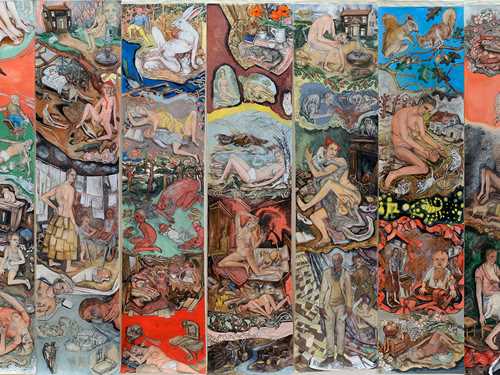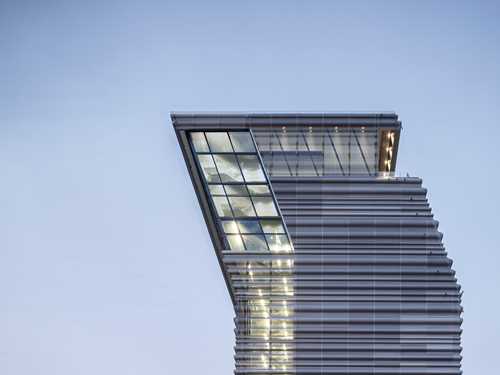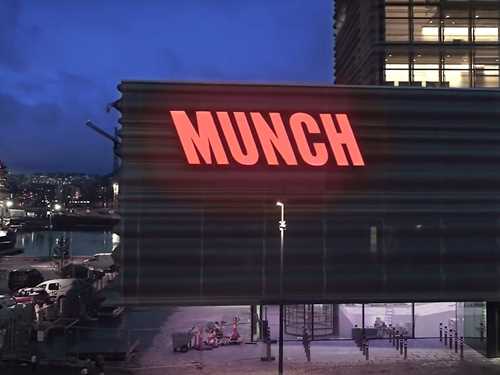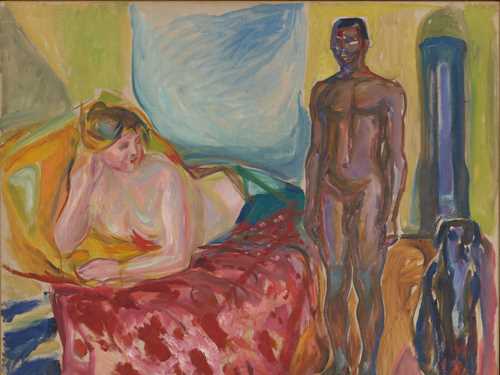Go Down with Me: Five Highlights
See Vanessa Baird’s gigantic exhibition featuring almost 600 works. In Go Down with Me, you can see powerful wall installations, a work that has been the subject of a controversial debate, and the artist’s feminist showdown with Edvard Munch.
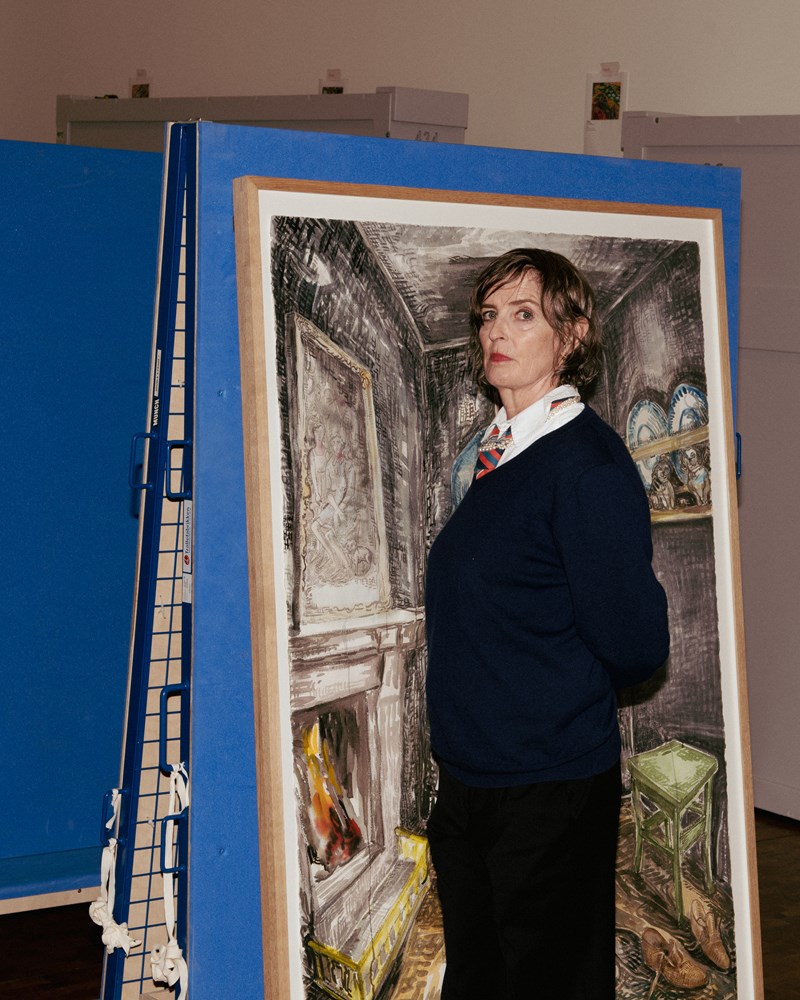
Photo: Ivar Kvaal, Munchmuseet
1. An overwhelming installation
The first thing that hits you in this exhibition is a 14-metre ‘birth canal’, whose walls are covered with no less than 345 watercolour paintings. These watercolours were painted during a period of just a few years and demonstrate Vanessa Baird’s almost bottomless creative output. Here she has created an all-enveloping universe of scenes from everyday life, full of self-mockery, humour, bodily decay, and conflicted emotions. This acts as an introduction to her artistic project, in which close relationships and small details reveal deep human feelings and experiences.
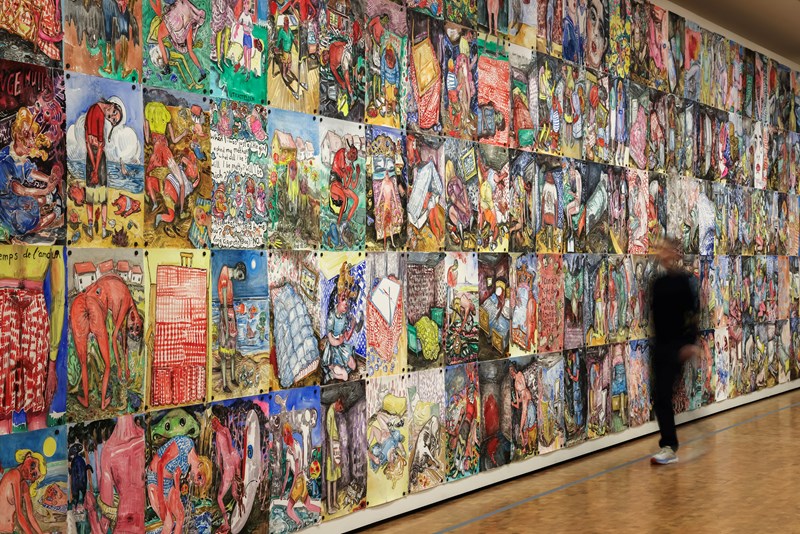
Photo: Ove Kvavik, Munchmuseet
2. A Debate-Stirring Painting
In 2013 Baird was thrown into a debate about the kind of emotions art can stir up. Two paintings out of a projected trilogy had already been hung in the buildings of Oslo’s Government Quarter, when it was decided not to include the third. There was concern over the way this painting, To Everything There is a Season, could have awoken too many strong memories of the terror attacks of 22 July 2011. Baird believes it is vital that art should deal with things that are uncomfortable or painful. Today this wall painting is considered one of the most important works of our time. In 2026, all three paintings will be reunited in the new government buildings.

Photo: Ove Kvavik, Munchmuseet
3. Political Engagement
Several new paintings made for this exhibition find Vanessa Baird regarding a world full of war and conflict. In the final room of the exhibition, Baird has created a completely new installation entitled You Must Never Go Down To The End Of Town If You Don't Go Down With Me. Since the winter of 2022, the wars in Ukraine and Gaza have given rise to a stream of images showing appalling human suffering. Baird’s paintings grasp the catastrophic events taking place with a powerful sense of activist engagement. The same room also contains six panels from You Are Something Else, which is inspired by the Mediterranean refugee crisis of 2015–18, and the Western world’s indifference to people who are forced to flee for their lives.
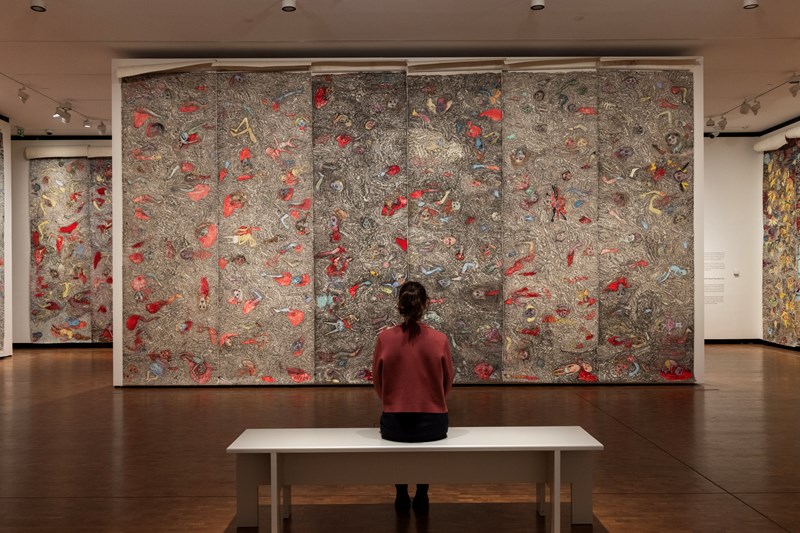
Photo: Ove Kvavik, Munchmuseet
The series Behind Lined Curtains also deals with the tragic consequences of war in Ukraine. Here we see many watercolours showing sunflowers weeping with despair at the state of the world.
4. Edvard Munch from a Feminist Perspective
Baird is deeply inspired by the art of Edvard Munch, while at the same time criticising his generation’s notion of the lone male genius. In her own self-portraits inspired by the artist, she mocks his self-aggrandizing portrayal of himself. Unlike Munch, who lived alone with just a housekeeper at his home at Ekely, Baird shows us an artist’s life that is full of carer’s duties and trivialities. She criticizes the idea of the lone, male artistic genius – and demands her own place in art history.
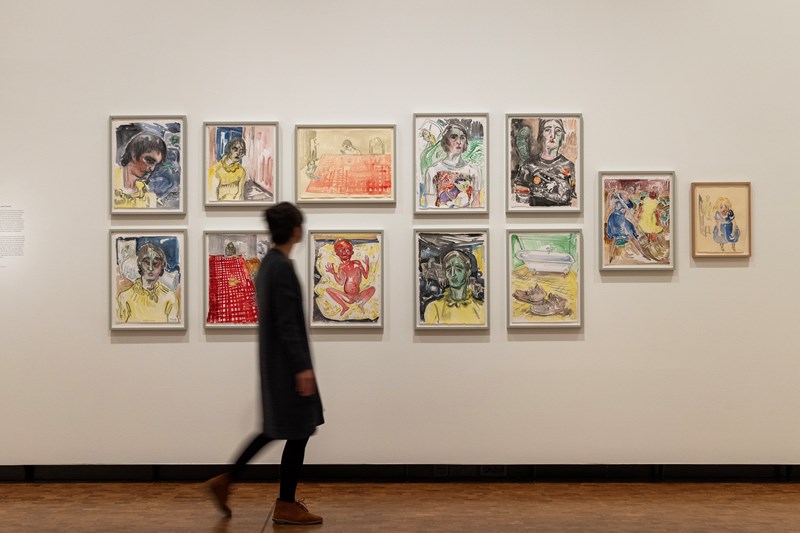
Photo: Ove Kvavik, Munchmuseet
5. A sideways look at the art scene
The satirical cartoon ‘Kebbelife’ is the work of Mette Hellenes’s pen, and follows the two friends ‘Mette’ and ‘Vanessa’ as they wander around Oslo mocking the self-importance of the art world. In real life, too, Mette and Vanessa have been a double act since first meeting at the Art Academy in 1989. Through many photographs and two films, the performative aspects of Baird’s artistry come to the fore.

